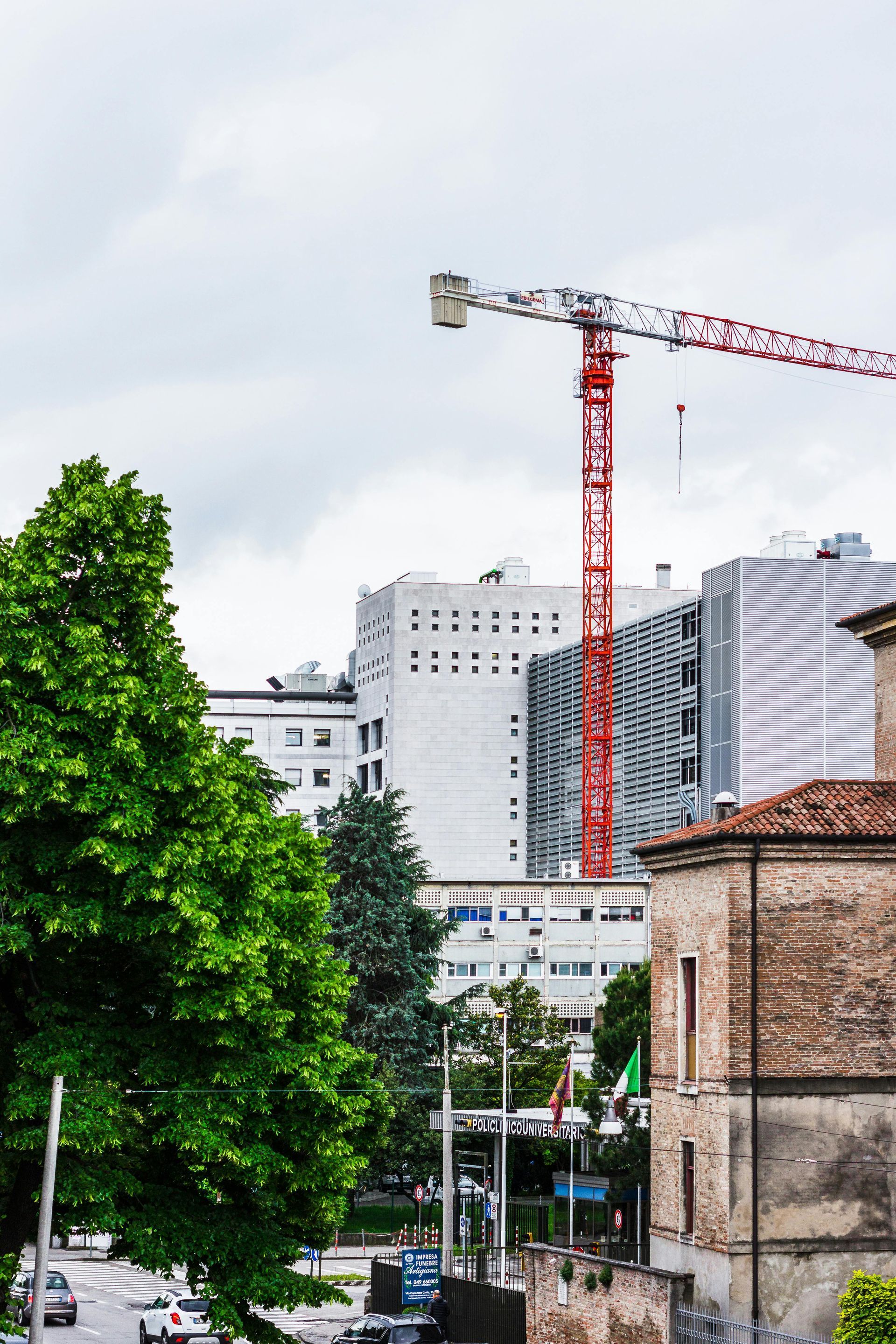Opportunity Zones
Unlocking Tax Incentives for Commercial Investors

What Are Opportunity Zones?
Opportunity Zones are like hidden treasure chests for commercial real estate investors. If you haven’t heard of them yet, you're missing out on one of the most exciting tax incentives available today. Established by the Tax Cuts and Jobs Act of 2017, Opportunity Zones are specially designated areas across the U.S. that need economic development. In exchange for investing in these areas, the government offers you significant tax benefits. Imagine boosting the local economy while simultaneously keeping more of your hard-earned money—sounds like a win-win, right?
Why Opportunity Zones Were Created
The primary reason for creating Opportunity Zones was to stimulate growth in economically distressed areas. These regions often have high unemployment, low property values, and fewer job opportunities. By encouraging private investment, the government hopes to revitalize these areas and bring in new jobs, housing, and businesses. If you invest in these zones, you’re helping to reshape communities in need, all while benefiting from some pretty appealing tax breaks. It’s not just about earning money; it’s about making an impact.
How They Work for Investors
Opportunity Zones are designed to make investing in real estate even more rewarding, and here's how it works: when you sell an asset and make a capital gain (say, stocks, bonds, or other property), you can reinvest that profit into an Opportunity Zone Fund. By doing this, you defer paying taxes on that gain until 2026 or whenever you sell the new investment, whichever comes first. Think of it as hitting the pause button on your tax bill—who wouldn’t want that?
Even better, if you hold the investment for at least 10 years, you can completely avoid paying taxes on any additional gains from that property. That’s right—zero capital gains tax on your Opportunity Zone investment. For commercial real estate investors, this can be a game changer. It’s not every day you get to grow your wealth while putting off or even eliminating taxes.
Where Are These Zones?
You might be wondering, "Where can I find these Opportunity Zones?" Luckily, they’re not hidden! There are over 8,700 zones across the United States, including in every state, Washington, D.C., and U.S. territories. Some of these zones are in urban areas, while others are in more rural communities. You could find an Opportunity Zone right in your backyard or across the country in an up-and-coming neighborhood. The variety is vast, so you can tailor your investment to your goals.
To locate these zones, the U.S. Treasury has an online map that helps you see where they’re located. Some of these areas might already be on your radar for investment, while others may surprise you. The good news is that once you identify an Opportunity Zone, you can dive into the details and evaluate its potential. Whether you're looking to invest in retail, office space, or industrial properties, there’s likely an Opportunity Zone that fits your commercial real estate portfolio.
Why You Should Care About Opportunity Zones
If you're a commercial real estate investor, Opportunity Zones should be on your radar. Not only do they provide you with the chance to support economic development, but they also offer the potential for substantial tax savings. By reinvesting your capital gains into these zones, you can defer taxes, reduce the amount of taxable gain, and potentially eliminate taxes on future profits. These benefits are too valuable to ignore if you're serious about building wealth in real estate.
But there's more than just financial gain at stake. Investing in Opportunity Zones allows you to make a meaningful impact on communities in need. You're not just acquiring properties; you're contributing to the creation of jobs, affordable housing, and overall economic growth. It's an investment that pays off in more ways than one.
The Timing Factor
One crucial element to remember about Opportunity Zones is the importance of timing. You don’t have forever to decide if you want to jump in. To take full advantage of the tax deferral benefits, you must reinvest your capital gains into a Qualified Opportunity Fund within 180 days of selling your original asset. After that, the clock starts ticking on your tax deferral period. The sooner you invest, the more time you’ll have to benefit from the program before the end of 2026, when the deferral period expires. Timing is everything when it comes to Opportunity Zones.
Holding the investment for the long term (at least 10 years) gives you the maximum benefit, as it allows you to exclude any future gains from taxes. So, if you're in it for the long haul, Opportunity Zones are a perfect fit for your portfolio.
Final Thoughts
Opportunity Zones offer a unique blend of financial gain and social impact, which makes them particularly appealing to investors who want more than just profit. You can contribute to the transformation of struggling areas while also receiving substantial tax breaks that allow you to defer, reduce, or even eliminate capital gains taxes.
So, if you’re a commercial real estate investor looking for a smart tax strategy and a way to make a difference, Opportunity Zones could be the golden opportunity you've been waiting for. It’s time to explore these zones, assess their potential, and start taking advantage of this win-win tax incentive.
Capital Gains Deferral: How to Defer Taxes on Capital Gains by Investing in Opportunity Zones
Deferring taxes on capital gains is music to any real estate investor’s ears, and Opportunity Zones make it possible. The ability to defer taxes on your capital gains is one of the most attractive perks that comes with investing in these designated areas. It’s like hitting the “pause” button on a major tax bill while your money keeps working for you. Let’s break down how capital gains deferral works and why it’s such a powerful strategy for commercial investors.
The Basics of Capital Gains Deferral
First, let’s cover what capital gains are. Anytime you sell an asset—whether it’s real estate, stocks, or a business—and make a profit, the government comes knocking for its share of taxes on that gain. But what if you could reinvest that profit without paying taxes right away? That’s where capital gains deferral comes in. Opportunity Zones provide a legal way to defer those taxes by reinvesting your gains into a Qualified Opportunity Fund (QOF).
Here’s how it works: instead of paying taxes on the profit right after the sale, you can invest that money into a QOF within 180 days. This fund will then invest in properties or businesses located within Opportunity Zones. By doing this, you defer paying taxes on your initial capital gains until the end of 2026, or until you sell your Opportunity Zone investment, whichever comes first. It’s a fantastic way to put off paying Uncle Sam while your investment grows.
Why Deferral Matters to Investors
So, why is deferral such a big deal? In the world of investing, time is money. The longer you can defer taxes, the more time you give your investment to grow. Essentially, you’re keeping more of your money working for you instead of handing it over to the government right away. This allows you to build more wealth in the short term. By deferring capital gains, you can reinvest a larger portion of your profit, increasing the potential return on your investment.
Let’s say you sell a property for a significant profit and reinvest those gains into a QOF. The money that would have gone to pay taxes stays in the investment, giving you a larger base to generate returns. This extra capital could be the difference between a good investment and a great one.
The 2026 Deadline
One important aspect to keep in mind is that this tax deferral doesn’t last forever. The clock is ticking, and the end date for capital gains deferral through Opportunity Zones is set for December 31, 2026. What this means is that any capital gains you defer by investing in a QOF will still come due at the end of 2026, or when you sell the investment. But the good news is that you’ve had all that extra time to grow your investment before paying taxes.
Even though you’ll eventually have to pay those taxes, the deferral can still provide a major benefit, especially if you make a significant return on your Opportunity Zone investment. Essentially, it’s a case of “delay now, grow more, and pay later.” Timing matters here, so if you’re considering Opportunity Zones, it’s best to act sooner rather than later.
Additional Tax Reductions on Deferred Gains
In addition to the tax deferral, Opportunity Zones offer another benefit: the potential to reduce the amount of capital gains you owe on your original investment. If you hold your QOF investment for at least five years, the basis on your original capital gains investment is increased by 10%. In simple terms, you’ll only owe taxes on 90% of your initial gains. If you hold the investment for seven years, the basis increases by another 5%, meaning you’ll only pay taxes on 85% of the original gain.
This reduction is a great way to shrink your tax bill even further. By holding the investment long enough, you can potentially reduce the amount you owe, providing additional financial relief. However, since 2026 is the cut-off date, the maximum benefit of holding for seven years applies only to investments made by the end of 2019. Still, the five-year hold is applicable to those who invest by the end of 2021, making it a worthwhile consideration.
Deferral Meets Long-Term Investment
For investors who love long-term gains, the Opportunity Zone program is a perfect match. Deferring your capital gains and reducing the tax burden on them is just the beginning. If you hold your investment for a full 10 years, there’s another major tax benefit: you won’t owe any capital gains taxes on the appreciation of your Opportunity Zone investment. That’s right—if your investment in the QOF increases in value over those 10 years, you won’t owe any taxes on those gains. Zero. Nada.
This is a rare and lucrative opportunity, especially for commercial real estate investors, where long-term appreciation can be substantial. Not only do you get to defer taxes on your original capital gains, but you also get to eliminate taxes on any new gains from the Opportunity Zone investment itself. For those with a long-term vision, this is the icing on the cake.
Final Thoughts
Capital gains deferral through Opportunity Zones is a game-changer for commercial real estate investors. It offers the chance to reinvest your profits without paying taxes immediately, giving your money more time to grow. Plus, by holding your investment in the QOF for the long term, you can reduce or even eliminate your tax bill on future gains.
The key is to act within the given timeframes and ensure that your investment aligns with your financial goals. If you’re looking to build wealth, defer taxes, and make a positive impact on communities, Opportunity Zones offer a fantastic strategy. It’s all about timing, patience, and understanding the tax incentives available. With the potential for long-term growth and significant tax advantages, investing in Opportunity Zones is an opportunity worth exploring.
Tax-Free Gains After 10 Years: How Long-Term Investments in Opportunity Zones Can Lead to Tax-Free Gains
Imagine a scenario where, after investing in commercial real estate, you watch the property appreciate in value over 10 years, and then you’re told that you don’t owe any capital gains taxes on those profits. It sounds almost too good to be true, but that’s exactly what can happen when you invest in Opportunity Zones. This incredible benefit is one of the most exciting aspects of the Opportunity Zone program, and it’s specifically designed to reward long-term investors who are willing to commit to revitalizing these designated areas.
The 10-Year Rule: How It Works
The key to unlocking tax-free gains in Opportunity Zones is the 10-year holding period. If you hold your investment in a Qualified Opportunity Fund (QOF) for at least 10 years, any appreciation or growth in the value of your investment becomes completely tax-free. That’s right—no capital gains taxes on any increase in the value of the property or business within the Opportunity Zone after the 10-year mark.
Here’s how it works: You initially invest your capital gains into a QOF, which then invests in properties or businesses within Opportunity Zones. Over time, as those investments grow in value, the appreciation is not subject to capital gains taxes if you hold the investment for 10 years or more. Essentially, after a decade, any profits you make from selling the investment are yours to keep, tax-free. It’s like giving your money 10 years to grow while the tax burden disappears in the background.
Why Tax-Free Gains Matter
The ability to avoid paying taxes on future gains is a huge advantage for any investor, but it’s especially appealing in the world of commercial real estate. Real estate typically appreciates over time, and if you’re investing in an up-and-coming area like an Opportunity Zone, the potential for value growth can be even greater. By holding your investment for the full 10 years, you can maximize your returns without having to worry about a hefty tax bill cutting into your profits.
Let’s say you invest in a commercial property within an Opportunity Zone and its value doubles over the next 10 years. Normally, you’d have to pay capital gains taxes on that profit when you sell the property. However, because you’ve held your investment in the QOF for 10 years, those capital gains are completely tax-free. This can be a game-changer for long-term investors who are looking to maximize their wealth-building potential.
The Power of Compounding Tax-Free Growth
One of the greatest benefits of the Opportunity Zone program is that it allows your investment to grow without the drag of taxes eating into your returns. Over a 10-year period, this can lead to significant compounding growth, as your investment continues to build upon itself without interruption.
In traditional investments, taxes are paid periodically on gains, which can slow down the compounding effect. But with the Opportunity Zone program, you don’t have to worry about paying capital gains taxes on the appreciation of your investment. This means that more of your money stays invested, leading to larger potential returns over the long term.
For commercial real estate investors, this is particularly powerful. Commercial properties tend to appreciate over time, and the ability to let those gains compound tax-free for 10 years can result in impressive profits. The longer you hold the investment, the more you stand to gain, and the fact that these gains won’t be taxed at the end is the icing on the cake.
A Reward for Long-Term Commitment
The Opportunity Zone program was designed to incentivize long-term investments in communities that need revitalization, and the tax-free gains after 10 years are the ultimate reward for investors who commit to the program. By holding your investment for a full decade, you’re not only helping to improve these designated areas, but you’re also positioning yourself to reap significant financial rewards.
The 10-year rule encourages patience and long-term thinking. Instead of flipping properties or making short-term investments, you’re encouraged to hold on to your investment, allowing it to grow in value over time. This long-term approach benefits both the investor and the community. The investor enjoys tax-free gains, while the community benefits from stable, committed investment in its future development.
Is It Worth the Wait?
You might be wondering if it’s really worth waiting 10 years to realize these tax-free gains. After all, a decade is a long time to hold an investment. The answer depends on your individual investment goals and financial situation, but for many commercial real estate investors, the potential for tax-free growth is too good to pass up.
If you’re willing to commit to a long-term strategy, the rewards can be substantial. The combination of tax deferral on your initial gains and tax-free growth after 10 years makes Opportunity Zones one of the most attractive investment vehicles for building wealth over time. Plus, by investing in areas that are ripe for growth, you could be sitting on a highly valuable asset in the future.
Key Considerations for Investors
While the prospect of tax-free gains is incredibly appealing, it’s important to remember that not all Opportunity Zones will experience the same level of growth. The success of your investment depends on a variety of factors, including the specific location of the Opportunity Zone, the type of development, and the overall market conditions.
Before committing to a 10-year investment, it’s essential to do your homework. Research the Opportunity Zone, understand the local real estate market, and make sure that the investment aligns with your long-term financial goals. While the tax incentives are generous, they won’t make up for a poor investment in an area with little growth potential.
Final Thoughts
The ability to achieve tax-free gains after 10 years is one of the most exciting benefits of investing in Opportunity Zones. By holding your investment for the long term, you can take advantage of the appreciation in value without having to worry about paying capital gains taxes. For commercial real estate investors, this presents a unique opportunity to grow your wealth while making a positive impact on underserved communities.
If you’re considering a long-term investment strategy, Opportunity Zones offer a compelling combination of tax incentives and potential for future growth. With careful planning and patience, you could enjoy significant tax-free gains while contributing to the revitalization of areas that need it most.
Eligibility for Commercial Properties: What Types of Properties Qualify for These Tax Incentives
Investing in commercial real estate is already a great way to build wealth, but when you combine it with the tax incentives offered through Opportunity Zones, the potential benefits multiply. Before you dive into an Opportunity Zone investment, though, it’s important to understand which types of commercial properties actually qualify for these incentives. Not every property can take advantage of the program, so knowing the eligibility criteria will help you make informed decisions about where to put your money.
What Makes a Property Eligible?
In order for a commercial property to qualify for the tax incentives associated with Opportunity Zones, it must be located within a designated Opportunity Zone. These are specific areas identified by the federal government as economically distressed and in need of revitalization. The idea is to encourage investors to pour money into these areas, thereby spurring economic growth and job creation.
To be eligible, the property needs to be part of a Qualified Opportunity Fund (QOF), which is an investment vehicle specifically set up to invest in Opportunity Zones. The QOF will then invest in commercial properties that meet the criteria set forth by the Opportunity Zone program.
In addition to being located within a designated zone, the property must be a new investment or undergo substantial improvement if it’s an existing property. The IRS requires that investors double the basis of the property within a 30-month period, which means putting enough capital into the property to significantly improve or develop it.
Types of Commercial Properties That Qualify
The good news is that a wide range of commercial properties can qualify for Opportunity Zone incentives, giving investors plenty of options to choose from. Here are a few types of commercial properties that often qualify:
- Office Buildings: One of the most common types of commercial properties, office buildings in Opportunity Zones can be a lucrative investment. Whether you’re purchasing an existing office building or developing a new one, as long as it’s located in an Opportunity Zone and meets the improvement requirements, you’ll be eligible for tax incentives.
- Retail Spaces: Investing in retail properties, such as shopping centers or standalone stores, can also qualify for Opportunity Zone incentives. With the rise of mixed-use developments and urban revitalization, retail spaces in these areas are often in high demand, especially as more businesses look to move into up-and-coming neighborhoods.
- Industrial Properties: Warehouses, manufacturing plants, and other industrial properties are another category of commercial real estate that can qualify. These types of properties are often critical to the economic development of a region, making them an ideal fit for Opportunity Zone investments. Plus, industrial properties tend to offer stable, long-term leases with tenants, making them a solid option for investors looking for reliable returns.
- Multifamily Residential Properties: While the Opportunity Zone program is aimed at commercial investments, multifamily residential properties can also qualify under certain circumstances. Apartment buildings, condominiums, and other types of multifamily housing developments are eligible as long as they meet the criteria for substantial improvement or are newly constructed within the Opportunity Zone.
What Doesn't Qualify?
While the Opportunity Zone program offers a lot of flexibility, there are some property types that do not qualify for tax incentives. These include "sin businesses," which are industries that the government has deemed ineligible for the program. Examples include liquor stores, casinos, golf courses, country clubs, racetracks, and tanning salons.
It’s also important to note that properties that do not undergo substantial improvement won’t qualify for the tax incentives. If you’re buying an existing property, you’ll need to make significant improvements to it within the specified 30-month period to ensure eligibility. Simply purchasing a property and holding onto it without making changes won’t meet the criteria.
Substantial Improvement: What Does It Mean?
One of the most important eligibility requirements for commercial properties in Opportunity Zones is the substantial improvement rule. But what does "substantial improvement" actually mean?
In simple terms, the IRS requires that investors double the basis of an existing property within a 30-month period in order for it to qualify. The basis is the value of the property, not including the land it sits on. So, for example, if you purchase a property for $500,000, you would need to invest an additional $500,000 in improvements over the next 30 months. This can include renovations, expansions, or other forms of development that enhance the property’s value and usability.
The idea behind this requirement is to ensure that investors are actually contributing to the revitalization of the area, rather than simply buying properties and holding onto them. By requiring substantial improvements, the program encourages real development that will benefit the community and help drive economic growth.
How to Evaluate a Property’s Eligibility
Before you make an investment in a commercial property within an Opportunity Zone, it’s important to evaluate its eligibility for the tax incentives. Start by ensuring that the property is located within a designated Opportunity Zone. You can use online tools to check whether a property falls within one of these zones.
Next, consider whether the property will require substantial improvement. If you’re investing in an existing property, make sure you have a plan in place to meet the substantial improvement requirement within the 30-month timeline. This might involve working with contractors, architects, and other professionals to ensure the necessary improvements are made on time and within budget.
It’s also a good idea to work with a tax advisor or real estate attorney who is familiar with the Opportunity Zone program. They can help you navigate the eligibility requirements and ensure that your investment qualifies for the full range of tax incentives.
Final Thoughts on Eligibility for Commercial Properties
Opportunity Zones offer a fantastic opportunity for commercial real estate investors to take advantage of tax incentives while contributing to the revitalization of economically distressed areas. By understanding the eligibility criteria for commercial properties, you can make smarter investment decisions that will maximize your returns.
Whether you’re investing in office buildings, retail spaces, industrial properties, or multifamily housing, there are plenty of options available within Opportunity Zones. Just remember to do your due diligence, meet the substantial improvement requirements, and work with professionals who can guide you through the process. With the right approach, you can enjoy significant tax benefits while making a positive impact on the communities that need it most.


LOCATION
9804 Pictor Ct
Louisville, KY
40241
CONTACT US
We are committed to providing an accessible website. If you have difficulty accessing content, have difficulty viewing a file on the website, notice any accessibility problems, or should you require assistance in navigating our website, please contact us.
©Copyright - All Rights Reserved
Website Powered by National Association of REALTORS®















